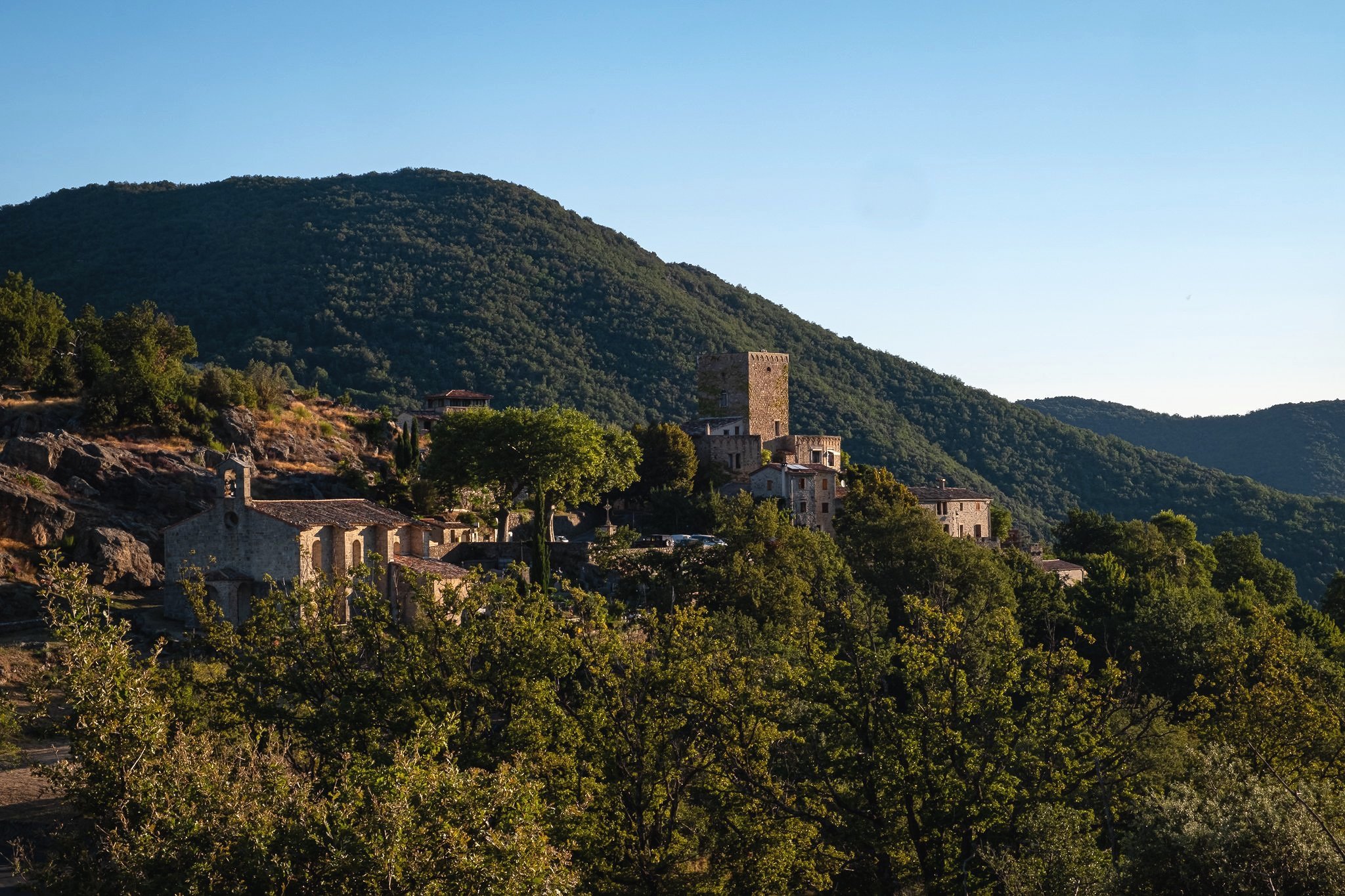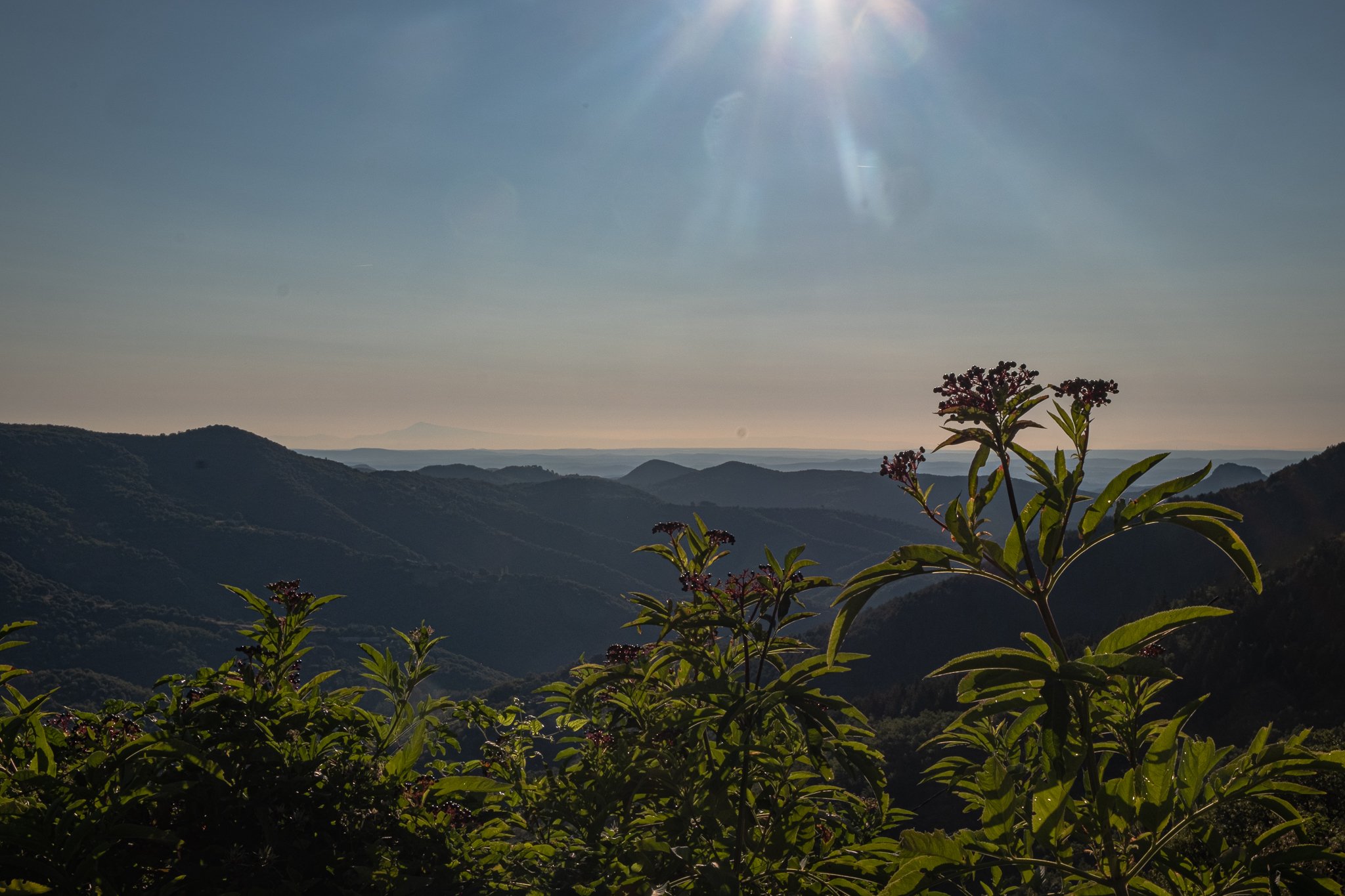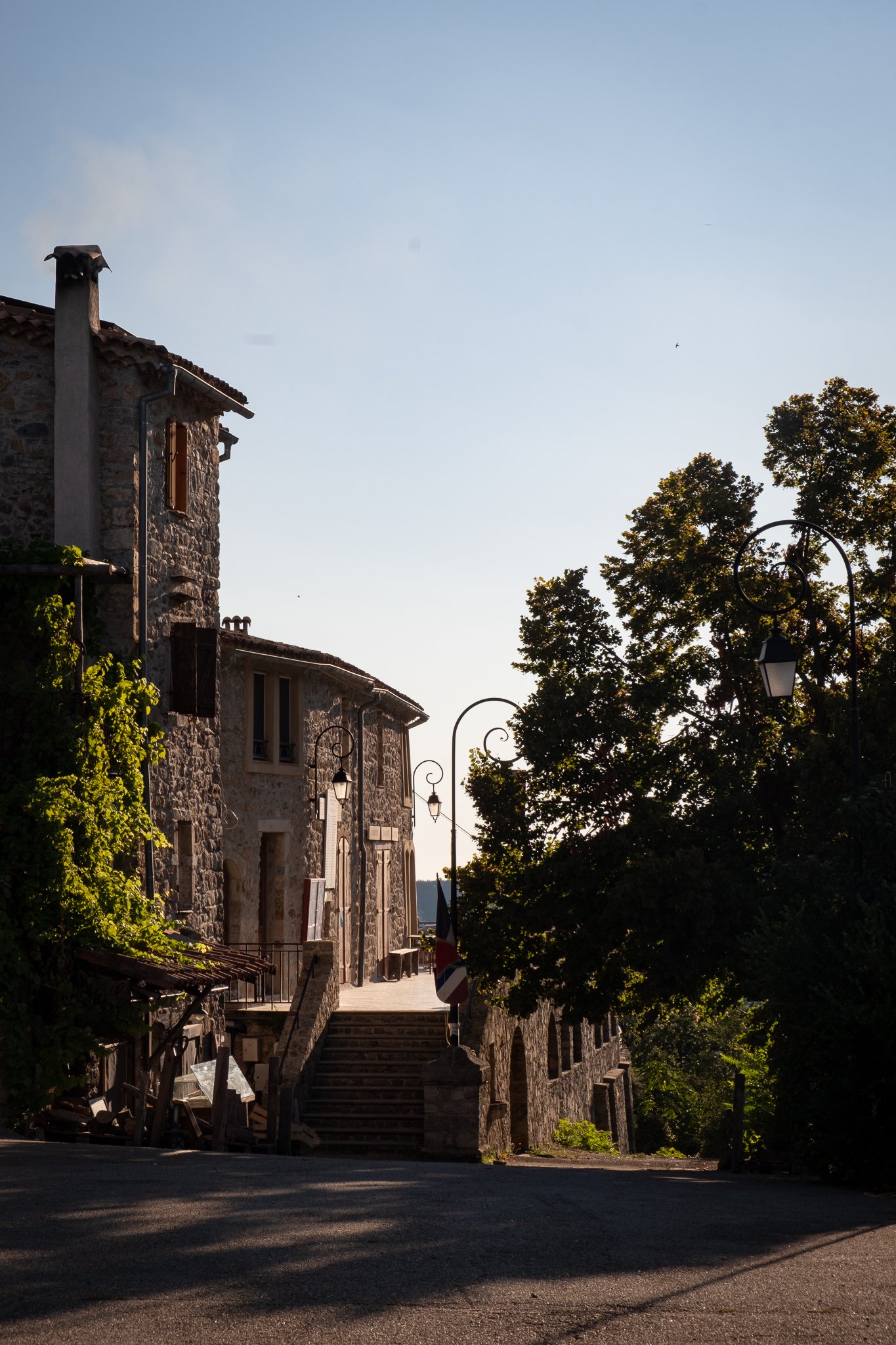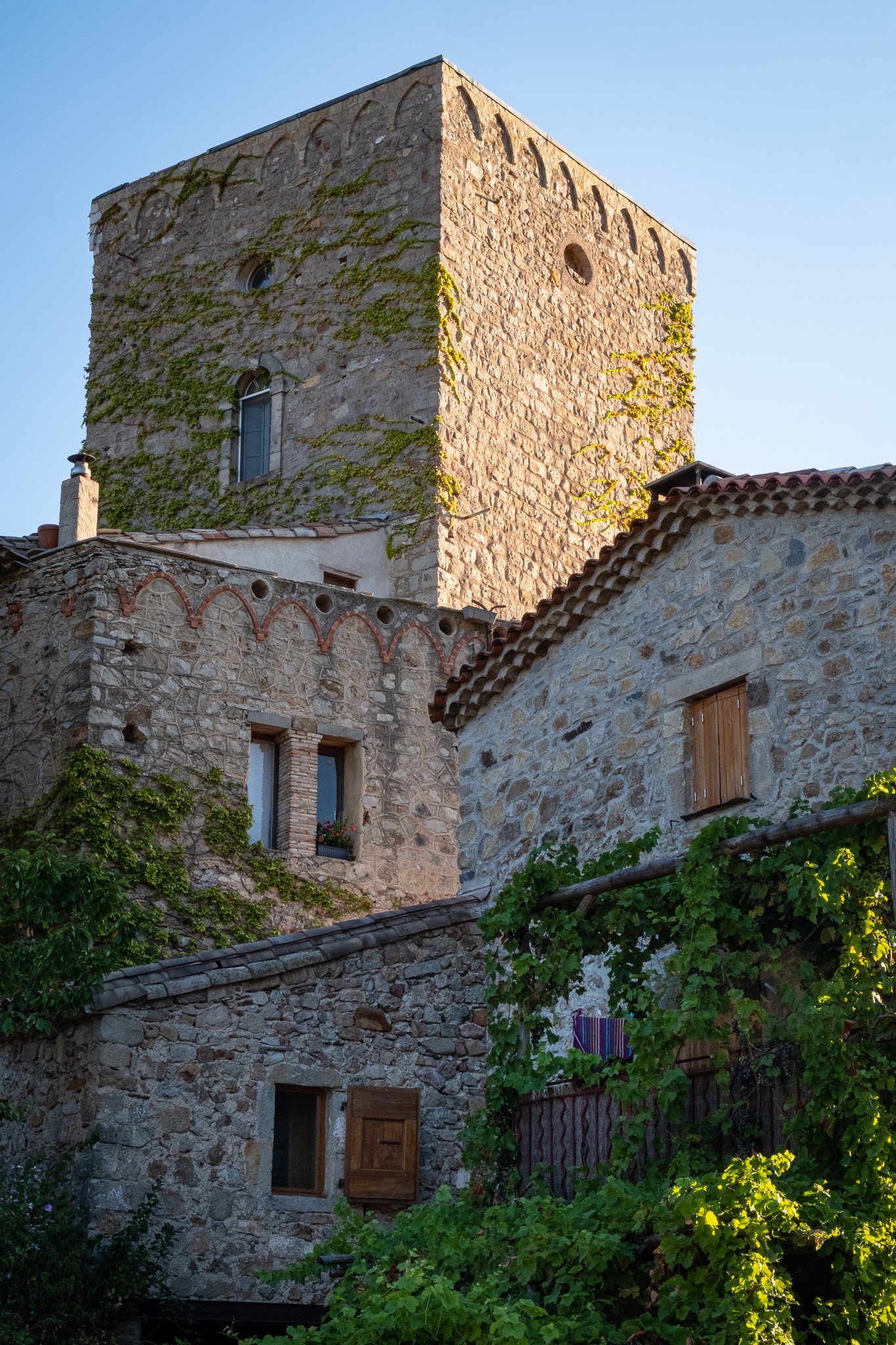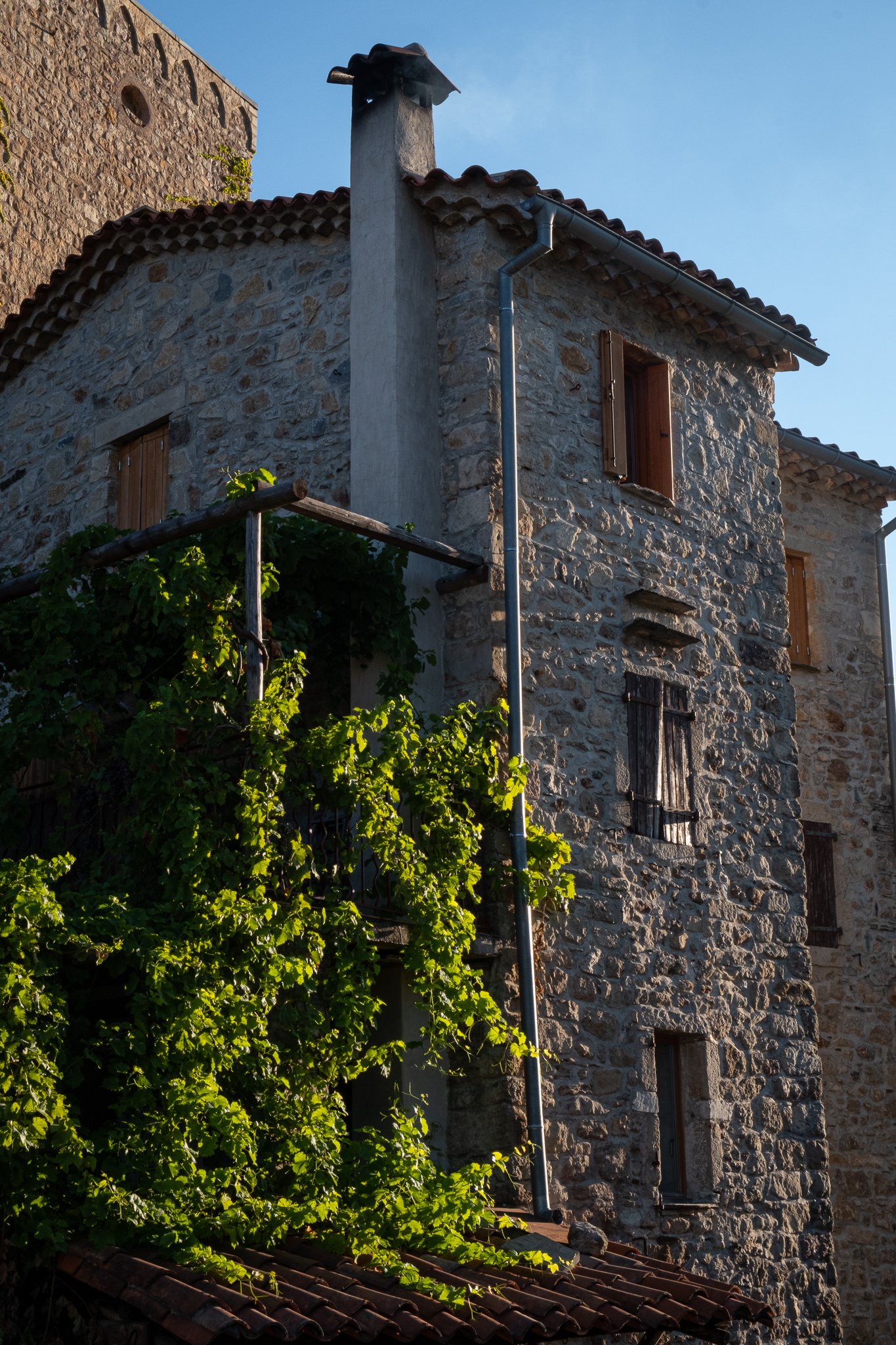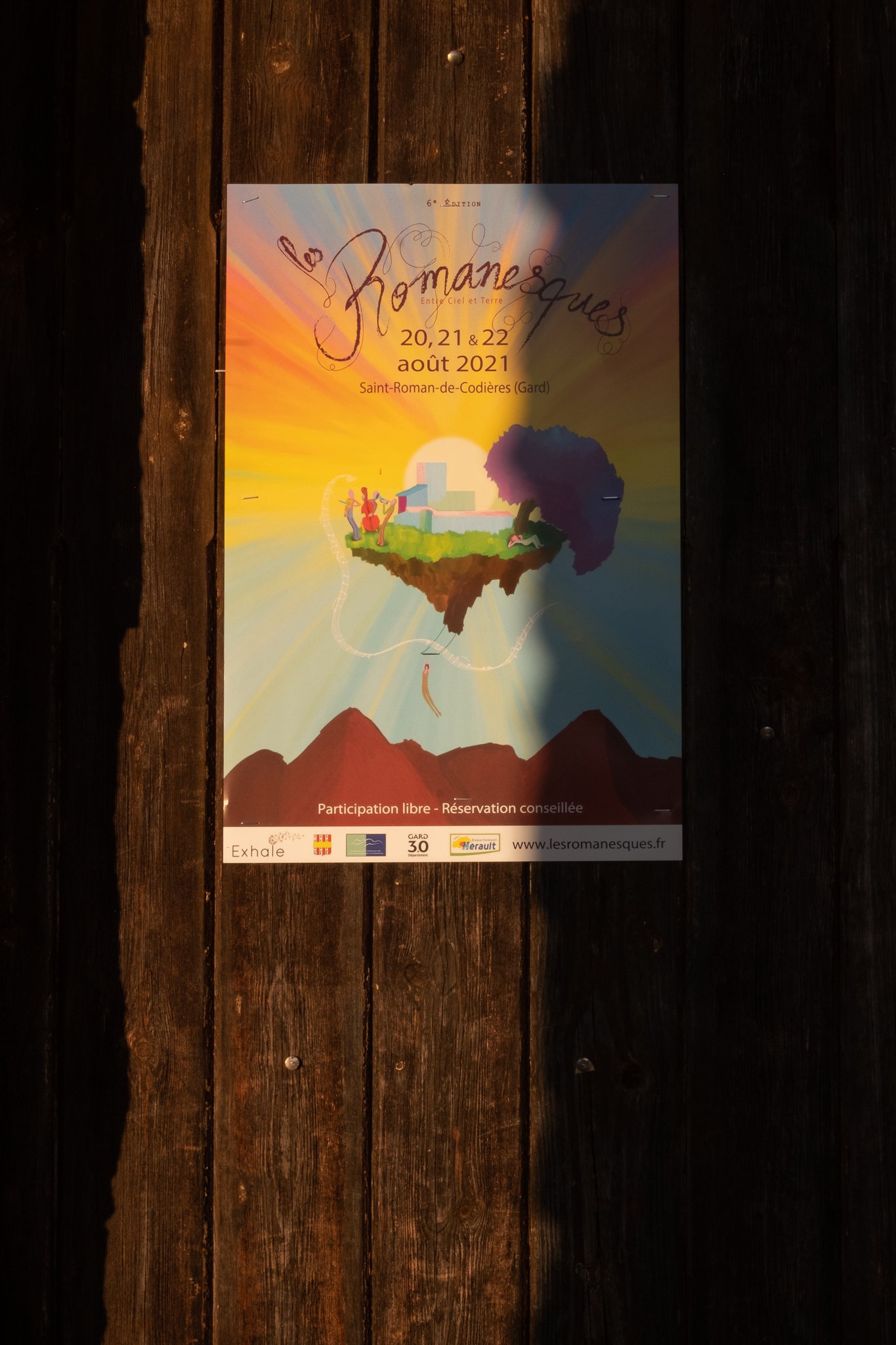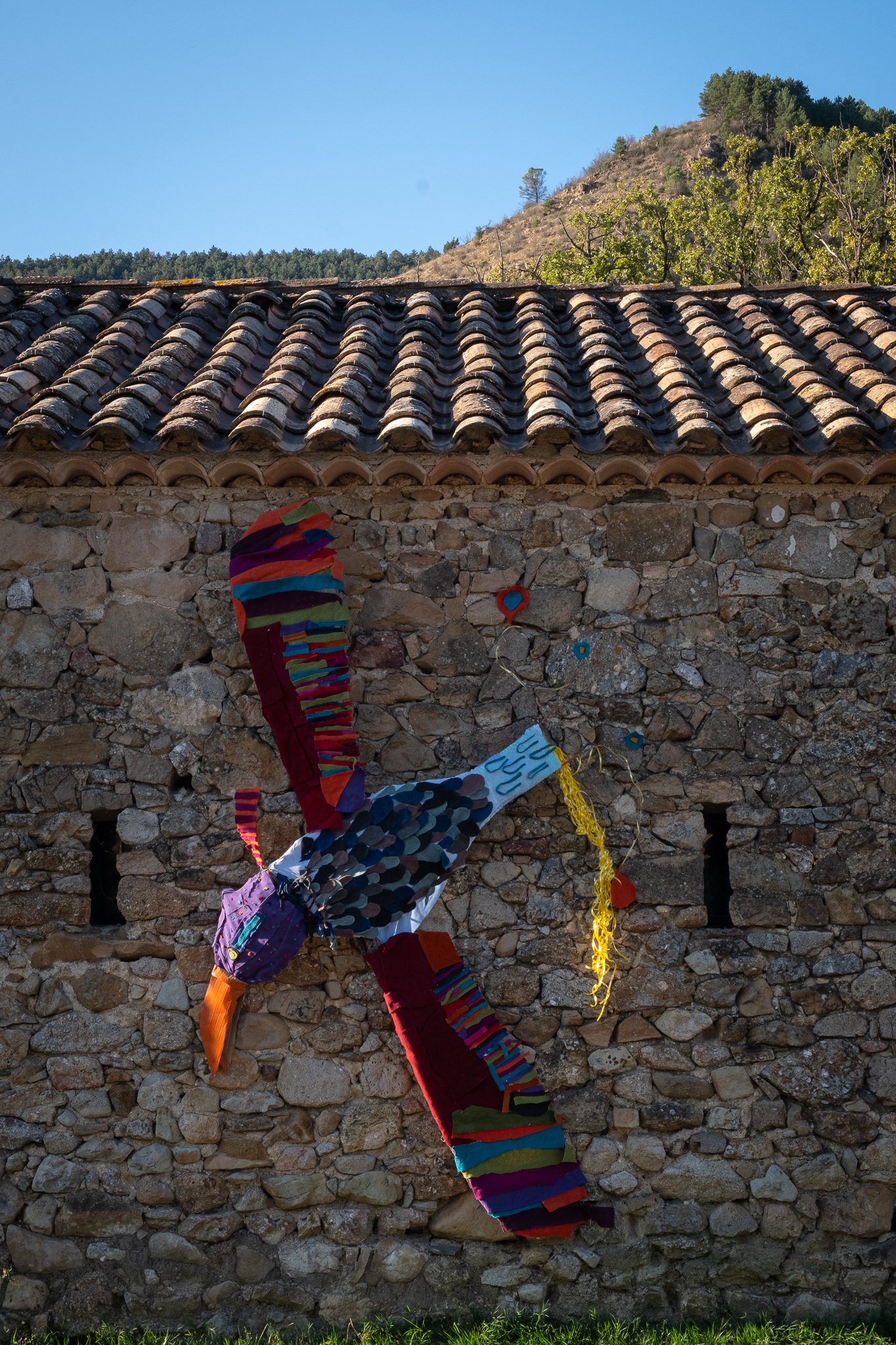August - Village Life
The sound of the 7 o’clock bell floats down the valley from the church, skimming the top of the chestnut trees, and finds me in the garden. I’m enjoying a late afternoon swim, the kids have vacated the pool, it’s quiet. The light is soft with long shadows, but it’s still hot. The bell signals to me that it’s time to shower and think about preparing dinner. It is also a gentle reminder that we do not live in total seclusion, which is often how it feels, but are in fact part of a community. The commune of St Roman de Codières, though big in size has just around 170 inhabitants, which gives each of us have an average of a square km of living space! There are only a handful of people residing in the tiny center, the rest are families living in isolated farmhouses like ours, hidden in the creases of the hills that skirt the village.
St Roman de Codières
The main route to our picturesque village is via a narrow serpentine road which sees very little traffic. It winds its way up the hill, dappled light filtering through the trees that shade the way - most welcome in the summer heat. Near the top it opens out and you are rewarded with an enchanting view of the medieval tower - a remnant of the 13th century chateau- the few surrounding ancient stone houses and the Catholic church which although originally built in the 12th century has had to be reconstructed several times after turbulent periods. The village is at the top of the hill where three valleys converge. There are extraordinary views in each direction. If you look southwest, the valley unfolds into layers of Cévenol hills, to the south-east is La Fage, a formidable limestone mountain that creates a natural barrier and offers up wonderful walking opportunities and to the north-east there is an endless panoramic view. On a clear day it is possible to see Mount Ventoux on the horizon all the way over in Provence.
For much of the year it is quiet in its seclusion, there is little reason for people to visit. There is no boulangerie or pharmacy, there once was a school but that closed years ago. However, for us it remains our nearest ‘destination’ with our mairie (town hall) that opens twice a week. When I stop by, extraordinary things tend to happen. My first visit I went in search of bread, but came home instead with a kitten. He was tiny, slate grey with a perfect white tipped nose and paws, given to me by an old lady from the village, who knew I had just moved into the valley. It was imperative to have a cat to keep the rats at bay, she informed me and I was inclined not to disagree. He turned out to be the most magnificent cat, a fearless hunter that has truly ruled the roost over the years, offering up a continual flow of gifts of rats, birds, lizards, the odd squirrel and most remarkably a Genet cat which he managed to pull in through the cat flap.
Our first Christmas, we took our girls to the mairie for a goutêr and for a showing of old black and white Mickey Mouse films. By the time we came out, the village had been transformed into a fairy tale scene; sugar-glazed gingerbread buildings, a layer of crisp white icing over the hills. As we made our way down the hill through the falling snow, we were chased by a man, gun slung across his back. He called out the name of our house, we stopped, he motioned us to follow him. We approached his pick-up with some trepidation whilst he ferreted under the tarpaulin and proudly presented us with two carrier bags containing frozen hunks of wild boar with bone and hair still attached. The local Chasse had shot the unfortunate boar near our house, and it is custom for us to receive some of the meat. He grinned at us and shook hands, and we made our way home full of Christmas cheer and a boot full of boar.
It’s during the months of July and August that the village is most active. A small rural market on Saturday entices people from their hidey holes and even attracts the odd tourist, looking for a trip into the hills. There are stands of locally produced garnet-coloured jams and dark chestnut honey, delicious organic bread cooked in a traditional wood fired bread oven in the village and pats of snowy white pelardons. There are stalls selling handmade baskets and pottery and homegrown medicinal plants and herbs. Live music, always a treat, is played by bands who perfom as much for their own pleasure as anyone else’s, the pine forest a perfect natural backdrop, with brilliant summer sunshine lighting the scene. There are bowls of moules marinières and plates of delicious oysters, a swoosh of the sea, all washed down with an artisanal beer or a glass of cool rosé. Luc, the maire, weaves his way in and out the crowd with big bowl of frites and a friendly smile. A true vote winner. It’s convivial and rustic. Sitting on the trestle bench in the shade of the plane tree, colourful bunting cheering you on, it feels the perfect place to be.
In addition to the market, the village has more recently been home to Les Romanesques, a wonderfully jazzy summer festival of music and art and circus, which takes place in the natural surrounds of the village and the hills and the recently built amphitheatre – a simple wooden platform with stone benches cut into the natural slope in an arc around the stage. A nod perhaps to the tradition that the village was once a base camp of the Romans. The festival is low-key and diverse, offering yoga at dawn, stargazing with telescopes at night. Bach at sunrise and organized walks in the hills. The usual Saturday market takes place but with added treats of quirky theatre and trapeze artists casually hanging from the trees.
Saturday night we take our place on the stone benches decorated with cushions to be treated to a celebration of Malian music. Open to impossibly starry skies, the vibrant traditional rhythms take hold and before long everyone is swaying and dancing in their seats. As we listen and move, we watch the moon rise above the ink-stained ridge and for a moment we are transported to a different continent. How wonderful that deep in our Cévenol hills you can experience magical nights such as these.
The village for most of the year feels like time has stood still and is encased in its solitude but during the summer it comes alive and its community responds. There is one last market of the year and I for one will be going. Who knows what I will come back with, another kitten perhaps (Tommy the original passed away this year) or certainly with a loaf and a jar of my favourite heather honey. Whatever is in my basket I know that I am lucky to be a part of a community, that offers up such memorable moments. I take them and store them away, knowing it is enough to keep me going through the winter months.

